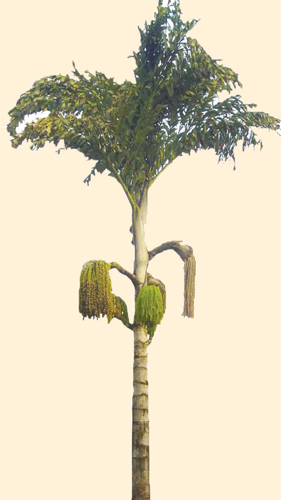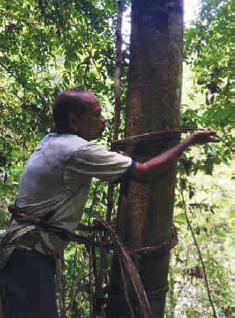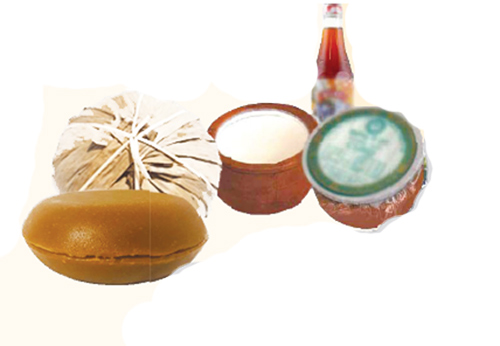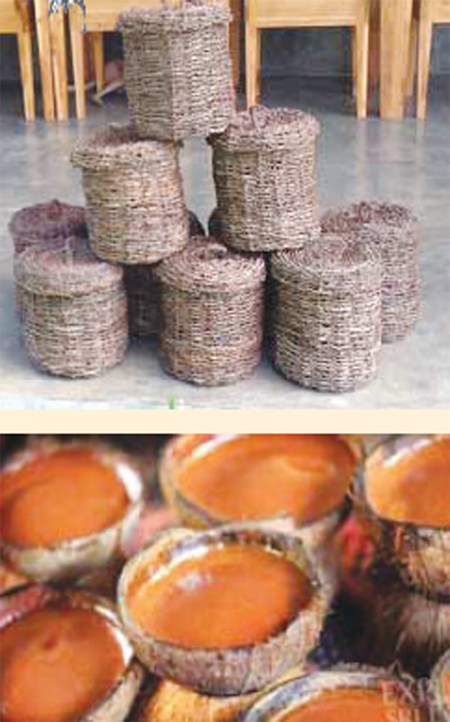
Just hearing the word treacle gives us a pleasant feeling. Treacle can also be called a ‘herb honey’ as it is made of the sap of certain trees or bushes Today, Hiru Wanniarachchi tells us about the fascinating  kithul palm and the delicious treacle and jiggery made by tapping or cutting its flowers.
kithul palm and the delicious treacle and jiggery made by tapping or cutting its flowers.
The kithul palm is known by several names. They include solitary fishtail palm, wine palm and jaggery palm. The botanical name is Caryota urens.
Kithul honey or treacle has a long history. In the past, people often made a living from the kithul industry. There is a story about a supplier of treacle and jaggery to the royal palace in folklore.
The kithul palm is abundant in the Ratnapura, Kandy, Nuwara Eliya, Badulla, Monaragala, Matara, Hambanthota, Kegalle, Kurunegala, Matale, Gampaha, Anuradhapura, Ampara, Polonnaruwa and Puttalam districts. Parts of the kithul palm are used for various purposes and the kithul flower is the most important part. Although kithul trees are found in tropical countries, the traditional knowledge of floriculture built around its flowers can be found only in Sri Lanka. This traditional knowledge has been evolving for a long time.
Teldiya or telijja ( sap ) of the kithul flower contains 12per cent - 15per cent sugar and can be obtained as teldiya from one tree for several consecutive months. The kithul flower is cut and covered with gadiba patta ( a kind of bark ). The kithul flower is then left to boil for about a week. The sap which drips in to the pot is called thelidiya or thelijja..
 Unfermented telidiya is used to make treacle. The special feature of the unfermented white water or thelidiya is that it takes on the colour of tea leaves and is very clear and sticky.
Unfermented telidiya is used to make treacle. The special feature of the unfermented white water or thelidiya is that it takes on the colour of tea leaves and is very clear and sticky.
A well grown mature kilthul flower can have between 12 – 20 bottles of thelidiya per day. When the water begins to ferment it first smells rotten and then turns white and begins to sour. Therefore, before the light brown colour of the water changes it should be used for the production of treacle. All the impurities in the thelidiya should be strained with a filter before heating it over a woodfire at a high temperature.
The medicinal properties of pure kithul treacle have been known since time immemorial and is used in local medicine.
Appliying kithul honey on burns heals them. Kithul treacle is an essential ingredient in porridge given to patients suffering from jaundice Unrefined kithul treacle also lowers the level of bad cholesterol in the blood and increases the level of good cholesterol. Kithul honey has antioxidant properties. Kithul sweets contain significant levels of vitamin A.
High quality kithul treacle is produced in Akuressa, Deniyaya, Urubokka, Bambarawana, Mattaka, Kandy, Matale, Ampara and Puttalam. The taste varies according to the topography of each area.


